When we think of trees our minds typically go straight to lush forests with tall bellowing trees that are greeny brown in color. However, green and brown trees aren’t always the answer. While it’s common for trees to have lush green or light brown leaves, there are countless species of yellow trees.
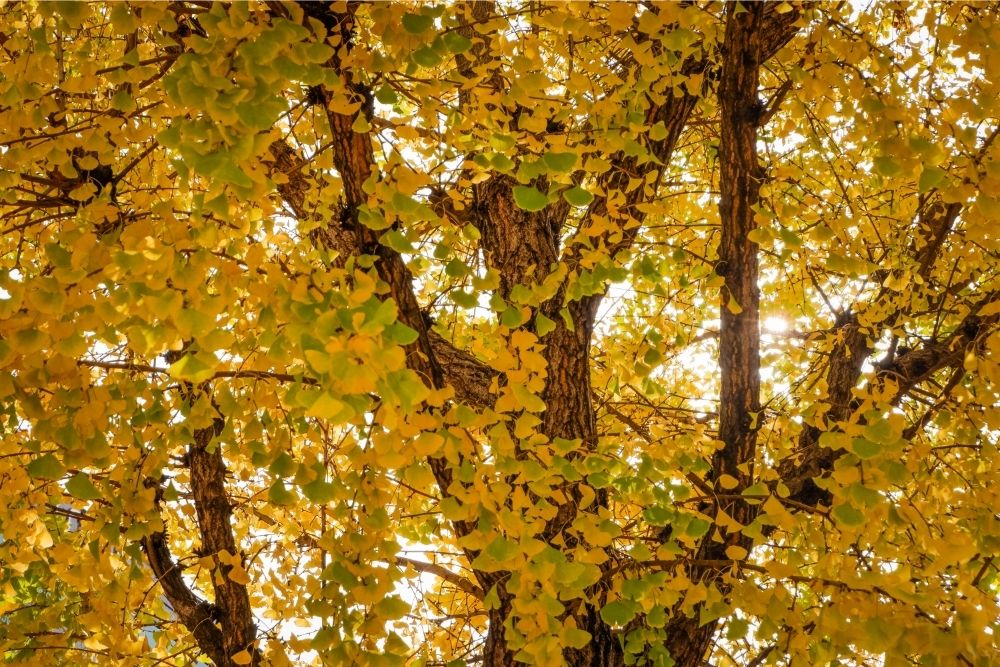
Trees change color throughout the year but it is possible to find trees that stay yellow all year round.
With the color of the leaf being one of the most important characteristics a homeowner looks for when planting a tree, why not be the one in your neighborhood to add a different color to your yard.
If you’re looking to add something new to your property or want something that offers a nice pop of color, you’ve come to the right place.
Yellow trees are arguably the easiest way to add more color and intrigue to a garden. Therefore we have compiled a list of the most popular yellow trees you can grow at home.
If you want to discover everything about yellow trees, keep reading.
1.Tulip Tree
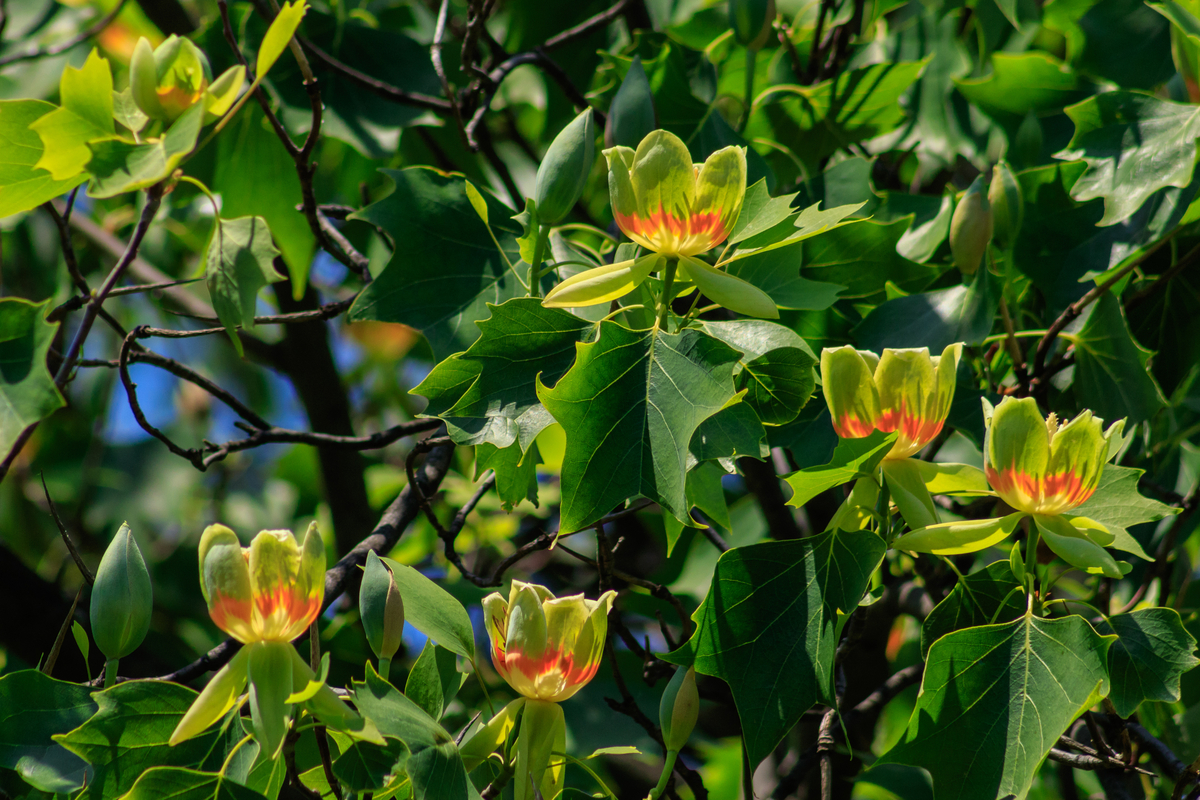
We kick this list off with one of the most well-known yellow tree varieties. The tulip tree is well-recognized thanks to its golden-yellow foliage. The tree leaves and yellow-green flowers bloom in the late spring and are concave in shape.
The tulip tree can reach 90 feet tall and up to 50 feet wide, needing a lot of space to grow successfully. Grown all over the U.S.a nice bonus of the tulip tree is its ability to attract hummingbirds, rabbits, bees, and squirrels.
RELATED: The Bloom Of Youth: The Timeline Of A Blooming Tulip
2. Golden Trumpet

Hooting its own horn in the summertime when golden-yellow blooms emerge, the golden trumpet tree is certain to bring life and color to any landscape.
With its bright trumpet-shaped flowers dominating the tree branches, this tree reminds us all that summer is approaching. Aside from its natural beauty this tree, which grows to 40 feet tall also has a simply divine floral aroma that you might smell even before you see the brightly colored flowers.
The golden trumpet tree will grow in full sun and sandy to loamy soil.
3. Tipu
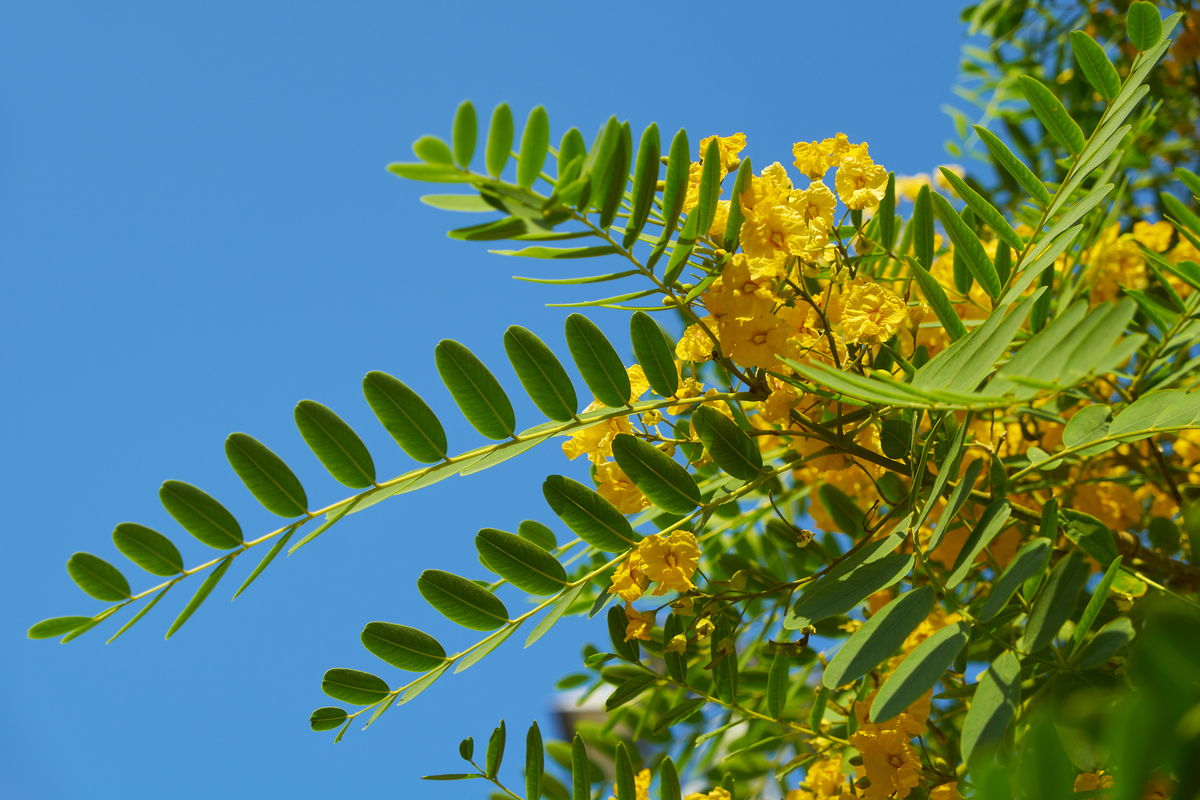
If you live in warmer climates the tipu tree is a great option. A deciduous tree native to South America, this is a gorgeous shade tree that can reach 25 feet tall.
Living for 50 to 100 years and growing at a rate of 2 to 3 feet a year, the tipu tree comes to life during the summer months when its delicate golden-yellow flowers blossom. Plant in loamy soil, in direct sunlight, if you want the tree to grow nicely.
4. Staghorn Sumac
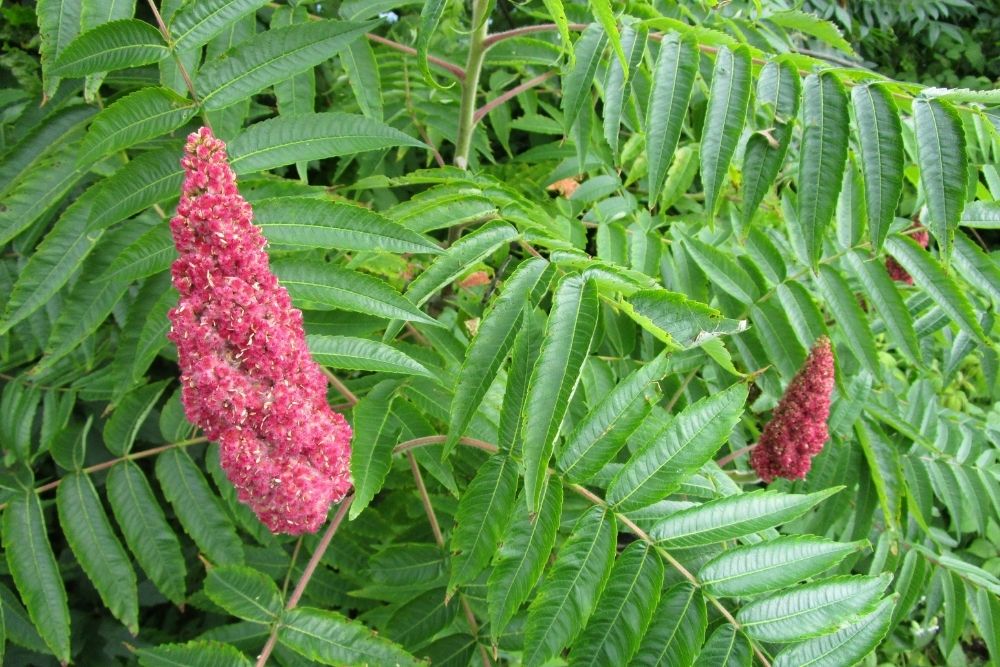
Happiest in full sun and partial shade the staghorn sumac tree has bright yellow and scarlet leaves that have a smooth and soft texture. Also known as the vinegar sumac, this round tree is not only beautiful, it is also super easy to grow.
Growing well in almost all soils and not requiring excessive watering the tree only grows to 15 feet tall. This makes it a fantastic option for smaller properties.
4. Shagbark Hickory Bark Tree
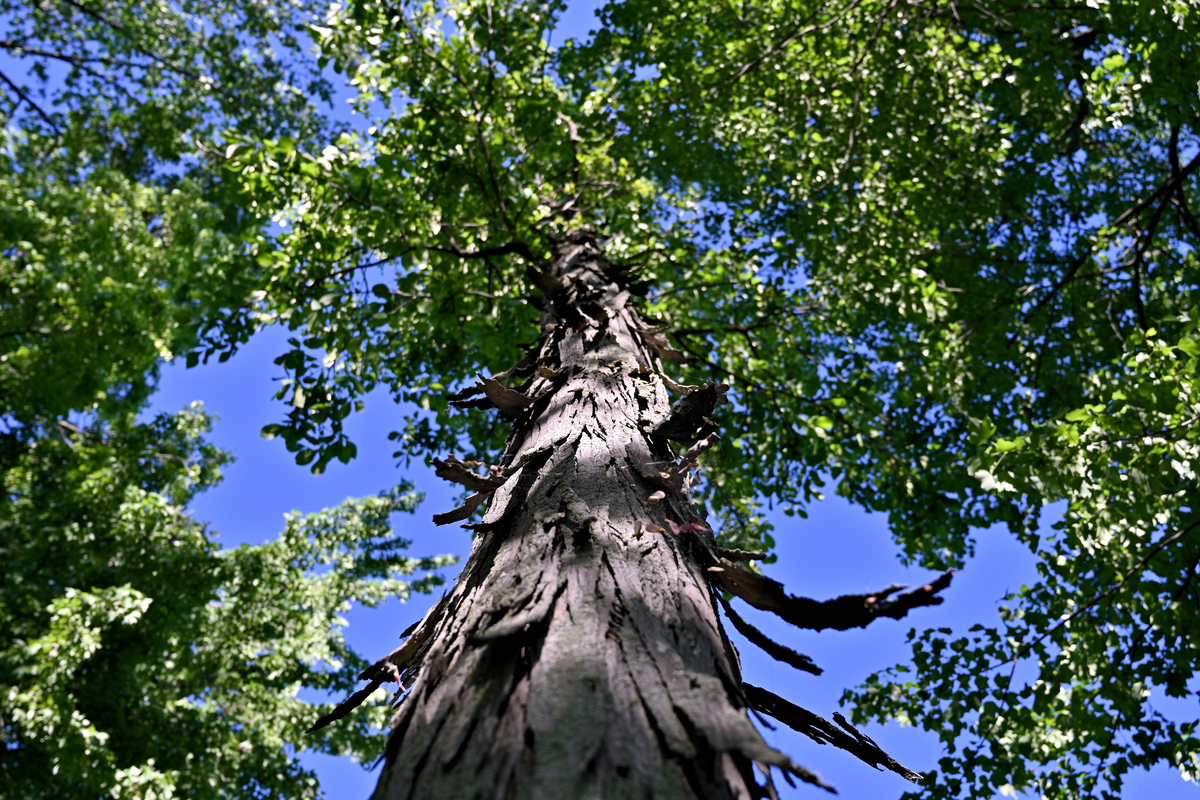
Native to midwestern and eastern parts of the United States the shagbark hickory has a one-of-a-kind blossom.
In the fall the long, weeping leaves on the hickory bark tree shine a dazzling yellow fall color that all your neighbors will be jealous of.
Growing slowly, yet still reaching 100 feet, this tree is also loved for its beautiful silvery bark with deep grooves. For the first forty years of its life, the tree will also produce nuts. Despite being pretty hardy, it is a tree that requires a lot of care and attention.
5. Yellow Chain Tree
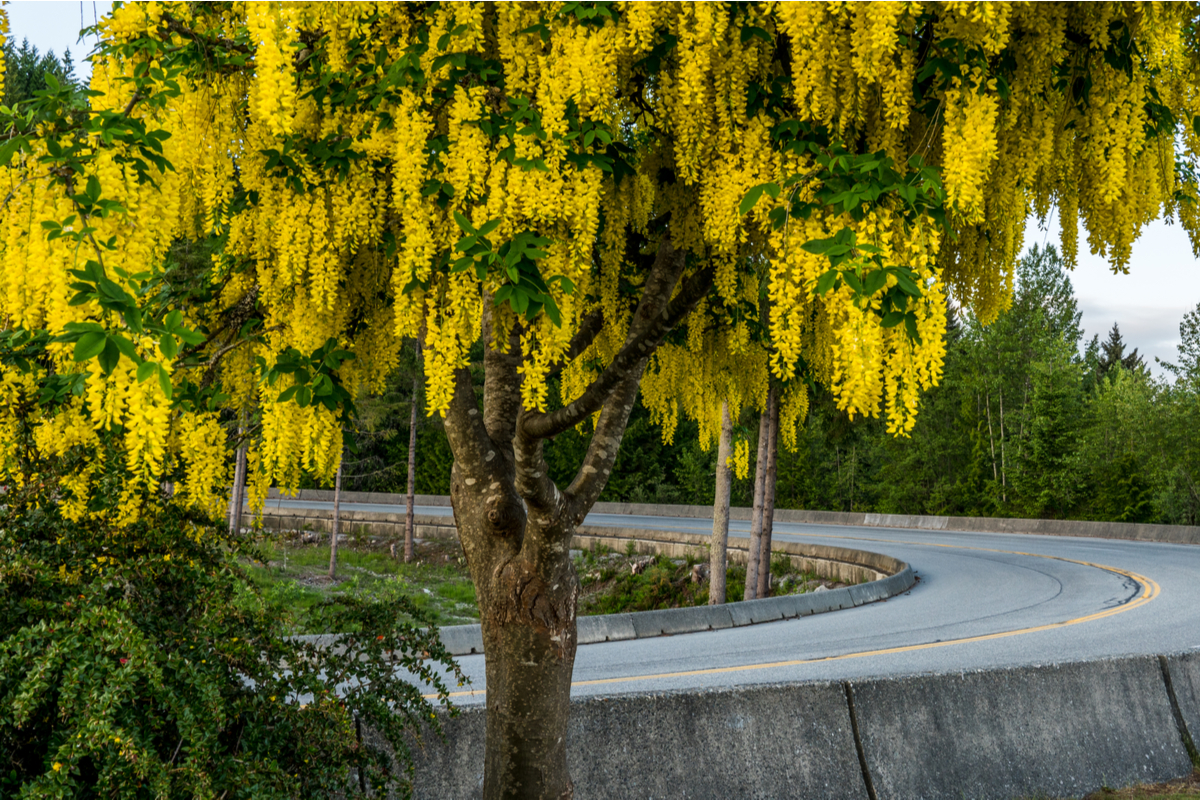
The laburnum tree is most commonly referred to as the yellow chain tree because of its long clusters of bright yellow flowers that dangle from the 2 to 3 foot long branches.
The fine, delicate flowers and clusters of lush green leaves make this tree a luxurious ornamental plant.
Though plenty of space is still needed the yellow chain tree only grows to a more manageable 30 feet. Having said that they typically stop growing at around the 15 feet mark.
6. Thevetia
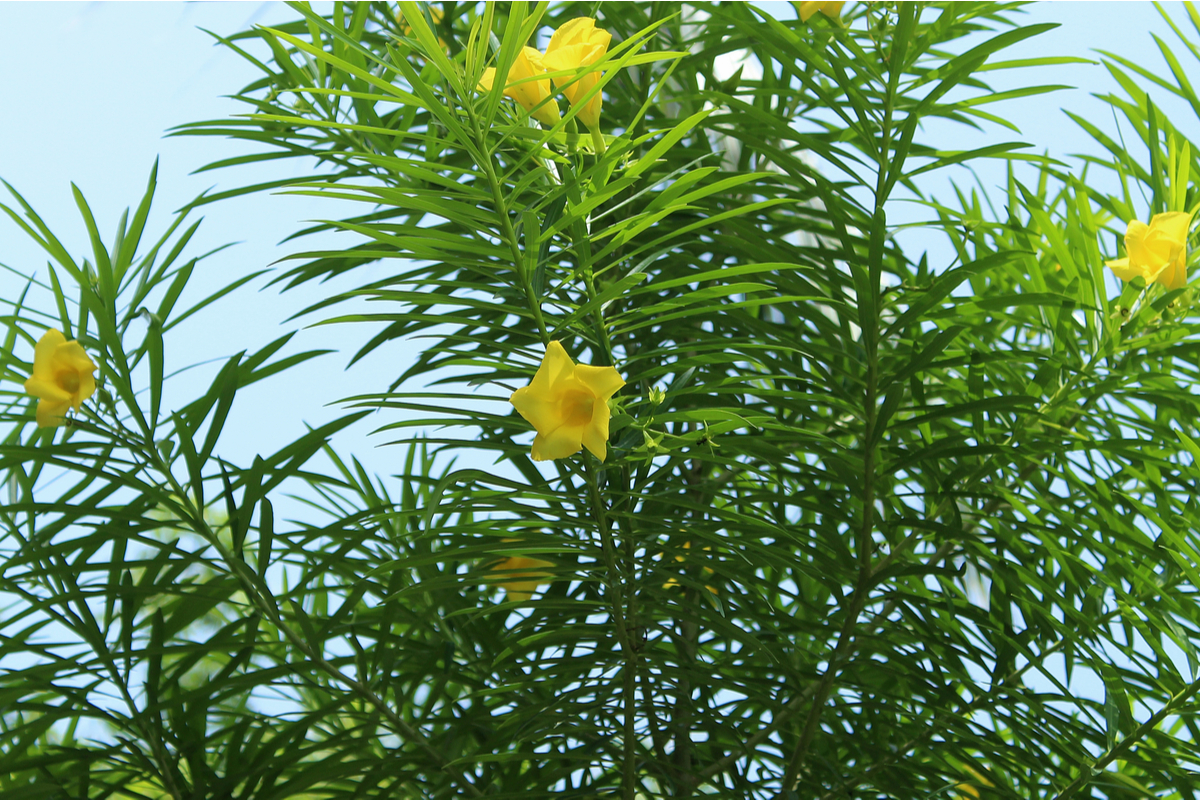
You may know the Thevetia tree by its common name, yellow oleander. Yellow oleander is only a small tree that grows from 6 to 12 feet tall.
It is an evergreen tree that has light green shiny foliage and a summertime bloom that is a vibrant yellow in color. The flowers found on this tree are a sweet funnel shape.
It is important to prune the tree after flowering. You should also know that the yellow oleander is toxic with the milky sap causing skin irritation.
7. Silver Birch
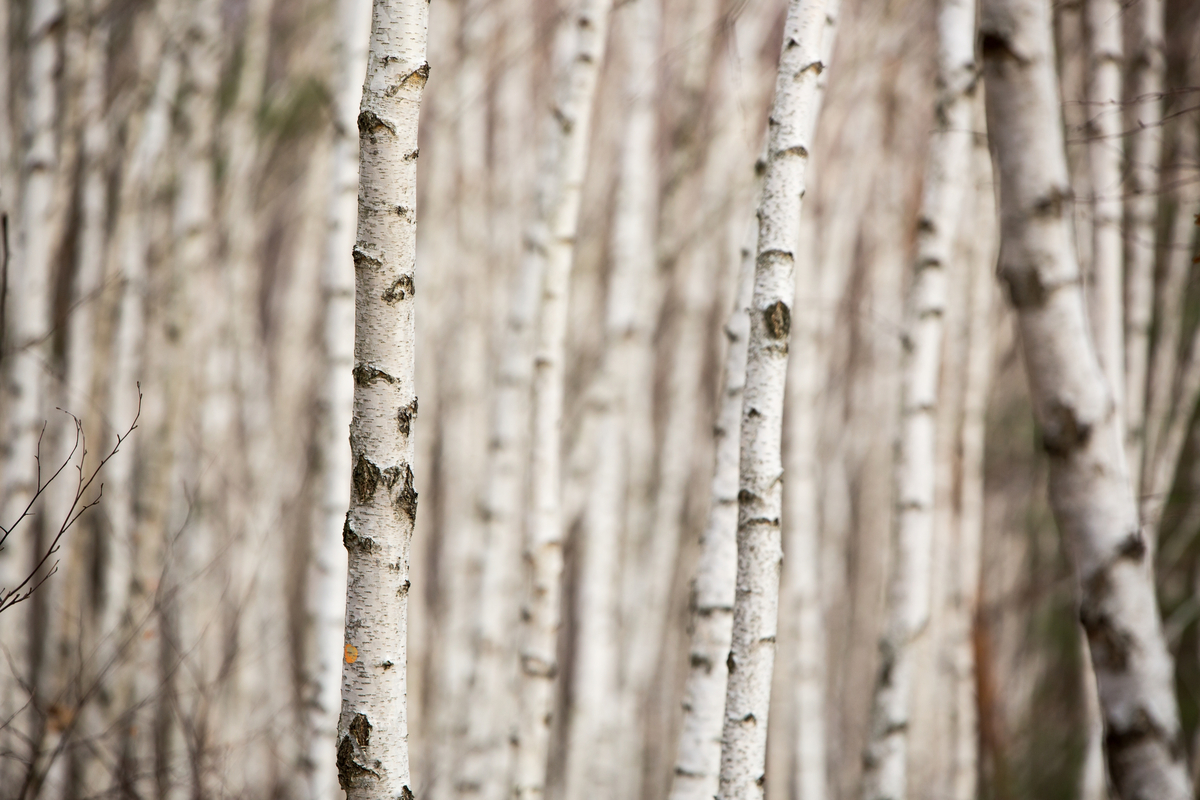
Silver birch is an unforgettable tree that has a graceful appearance and yellowy-green leaves that delicately flutter in the wind.
They have a white, silvery bark that can be scratched off to reveal a darker color below. A low-maintenance tree, the silver birch is a fall tree that loves wet soil and relatively warm temperatures.
RELATED: A Silver Lining: 19 Different Types Of Silver Trees
8. Palo Brea
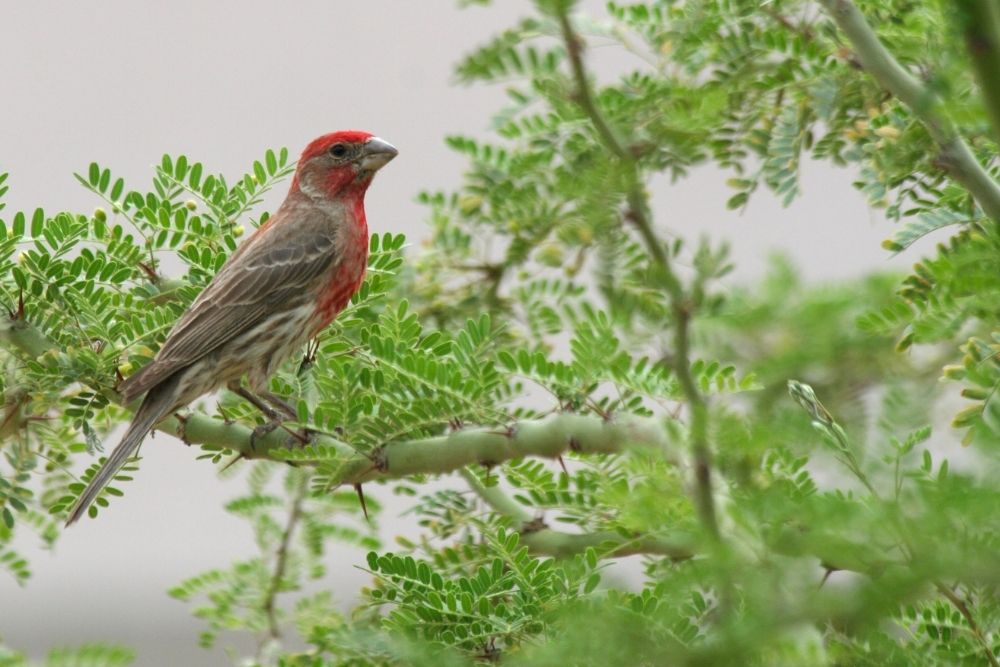
The Palo Brea tree reaches heights of 20 to 25 feet making it a more suitable choice for smaller yards. It has an interwoven canopy with distinctive dark green branches.
The green bark on the tree is capable of photosynthesis making the tree drought tolerant. It is in mid-spring that the radiant yellow flowers blossom, adding a ray of sunshine to a garden.
This unruly-looking tree looks best in arid landscapes but could add something new to your yard. It will appreciate you planting it in full sun and permeable soil.
9. Golden Shower Tree

In full bloom, the cassia fistula or golden shower tree looks absolutely gorgeous. It has a 1-foot long cascading cluster of yellow flowers that emerge in early spring.
The flowers are recognized for their interesting trumpet-shaped appearance. Reaching heights of 35+ feet, this tree has dark brown, seed pods that follow the flowering.
Remaining on the tree all winter. For success when growing the golden shower tree prune it regularly when it is young.
10. Japanese Maple Tree
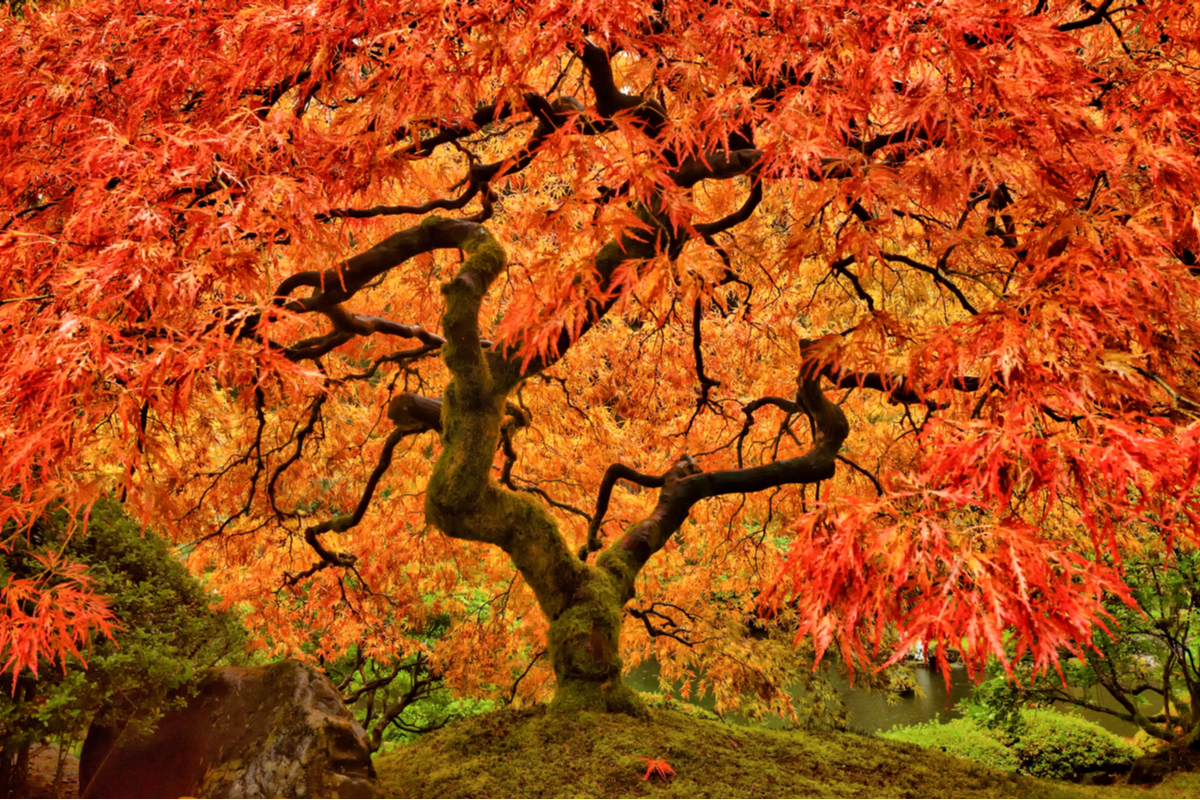
The next tree on our list comes in a variety of different sizes and shapes, making it easier for you to find one that will fit in your garden. For smaller yards, the dwarf tree variety might be better.
This maple tree is loved for its ever-changing foliage that bears pale yellow leaves in fall. Catching the eyes of your neighbors, the small Japanese maple tree adds texture that can look great in the center of a yard or as a shrub border.
This tree requires moist, well-drained soil and some shade for ideal growth.
11. Yellow Buckeye
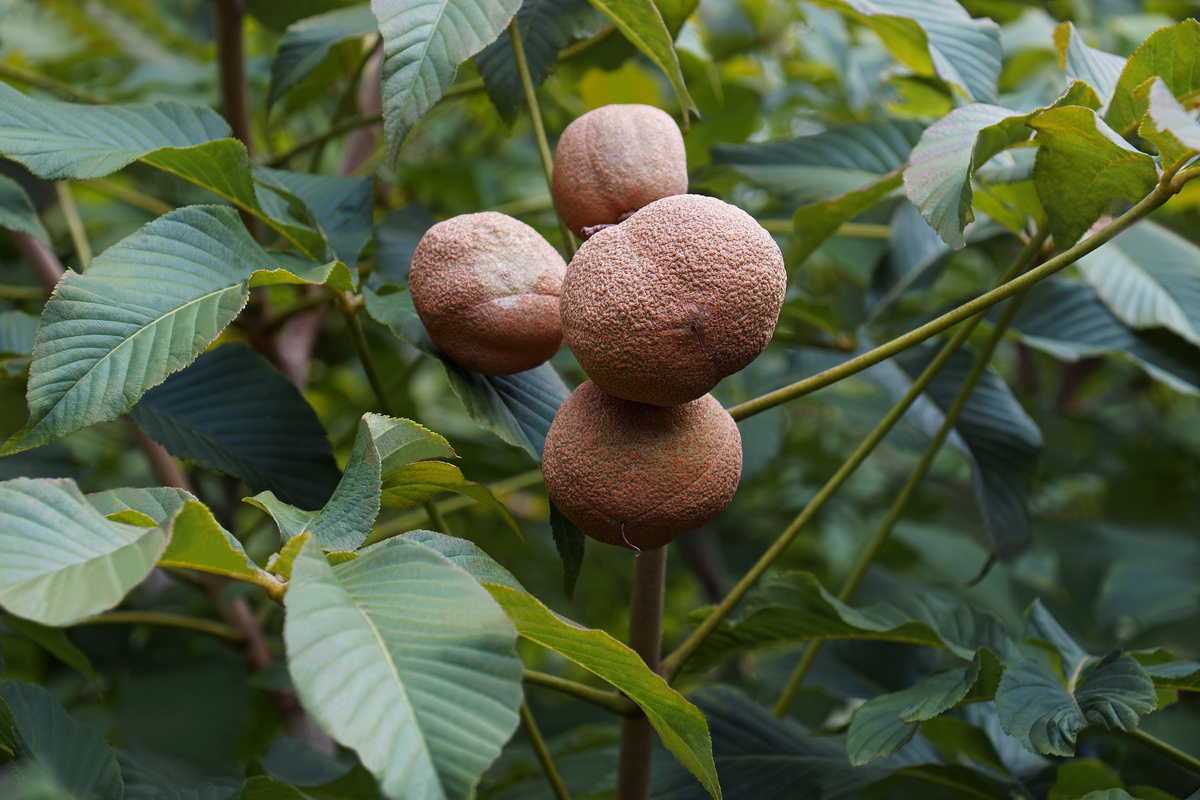
Grown in full sun and loam soil the yellow buckeye tree gets its name from its shiny appearance and dark seeds which resemble that of a deer’s eye. A deciduous tree, the yellow buckeye produces lively 6-inch tall light yellow flowers in the spring.
In the autumn the flowers turn a fiery orange-yellow color. The thin, flattened leaves on the tree provide a nice contrast to the yellow flowers, creating a natural backdrop as though the tree is trying to show off its colors.
Yellow buckeye can grow to 75 feet tall so you will need a big yard.
12. Palo Verde
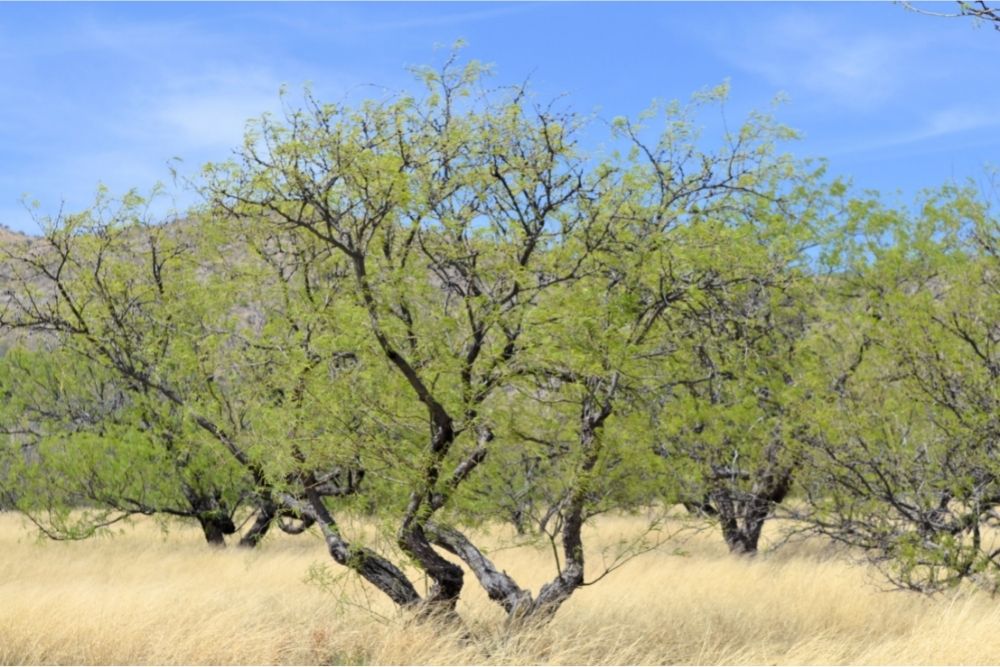
There are actually four different species and one hybrid variety of the palo verde tree, all of which are native to the Southwestern USA.
This impressive drought-resistant tree has a thick green trunk capable of photosynthesis which protects the tree from harsh dry conditions.
Growing from 25 to 35 feet tall, the palo verde tree produces vibrant bunches of yellow spring blossom that form a canopy of shade that covers the tree.
The branches on this far covering tree are armed with thorns so be careful when maintaining it. This tree will grow best in USDA Plant Hardiness Zones 8 – 11.
13. Sweet Gum Tree
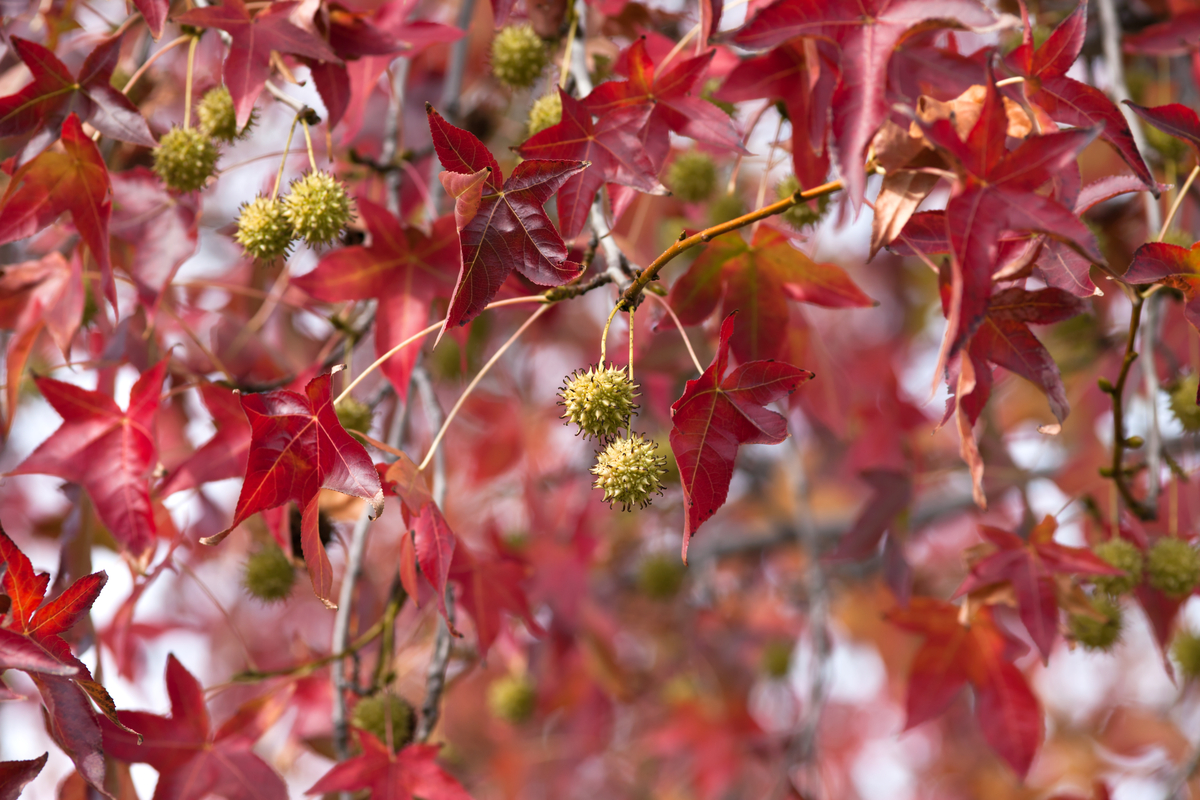
The sweet gum tree is enjoyed by those that love trees with a more unique shape and color. This tree turns yellow and orange in the fall and winter, attracting birds and chipmunks as it grows.
At the top of the 75-foot tall trunk sits a pyramid-shaped canopy. The sweet gum tree must be planted away from pavements as its shallow roots have been known to lift patios and sidewalks.
14. Chinese Flame Tree
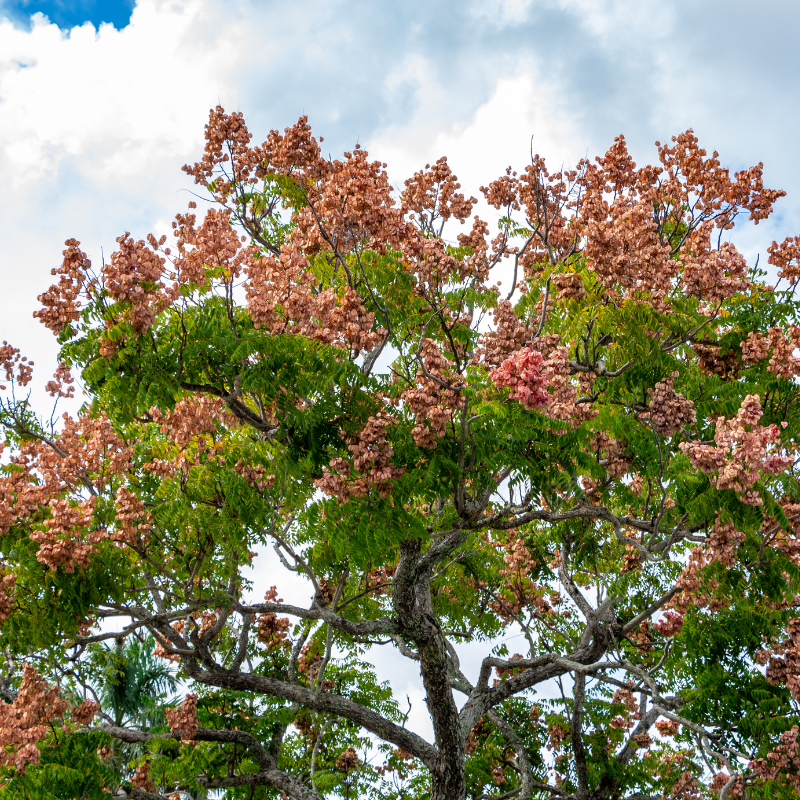
Ranging from 25 to 45 feet tall the Chinese flame tree puts on an incredible summertime display of colorful foliage and flowers.
Tiny yellow blossoms burst out atop the lush green canopy before being replaced by paper-like, puffy seed pods. The seed pods on the tree vary from red and orange to salmon color.
This tree loves full sun, loamy soil, and a good regular pruning session.
15. Sweet Acacia
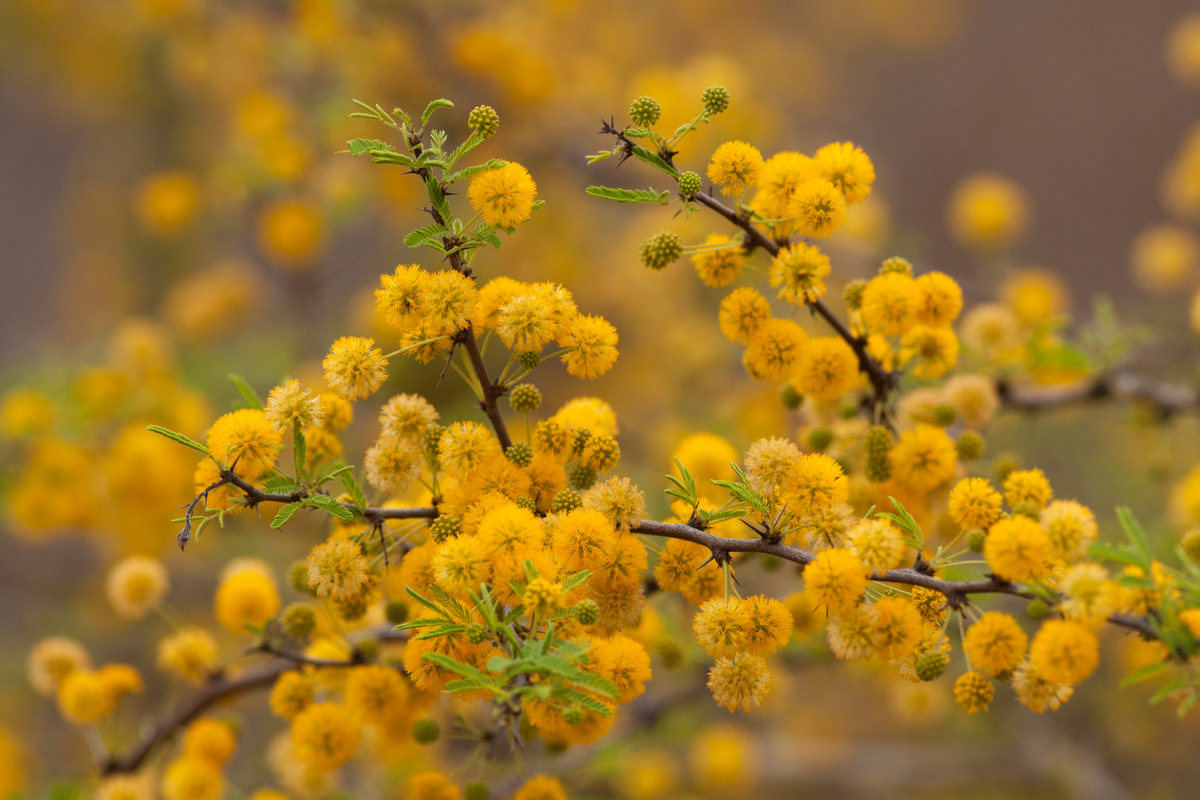
Blooming in the autumn months the sweet acacia tree has puffy, golden-yellow flowers that have a delightfully sweet fragrance. The widespread canopy on this tree and the clusters of yellow flowers are what make this plant so special.
When the blossoms on the sweet acacia tree have subsided brown pods emerge. Sweet acacia trees can grow up to 20 feet tall, making them a lot more manageable than other trees on this list.
When planting a sweet acacia tree make sure you plant it in permeable soil in full sunlight.
Final Thoughts
As you can see from our list, there are countless varieties and species of yellow trees out there. Each species has its own unique characteristics that make it look unique.
While most of the trees on the list can be easily grown at home, there are some that require an incredible amount of space, time, and effort to grow.
The chances are you won’t be able to grow a 100-foot tall tree in your backyard, however, the smaller trees on our list that are only 20 feet tall could be grown instead.
Now you understand the different varieties and species available, it’s time to start considering which tree you would like to start growing in your garden.







